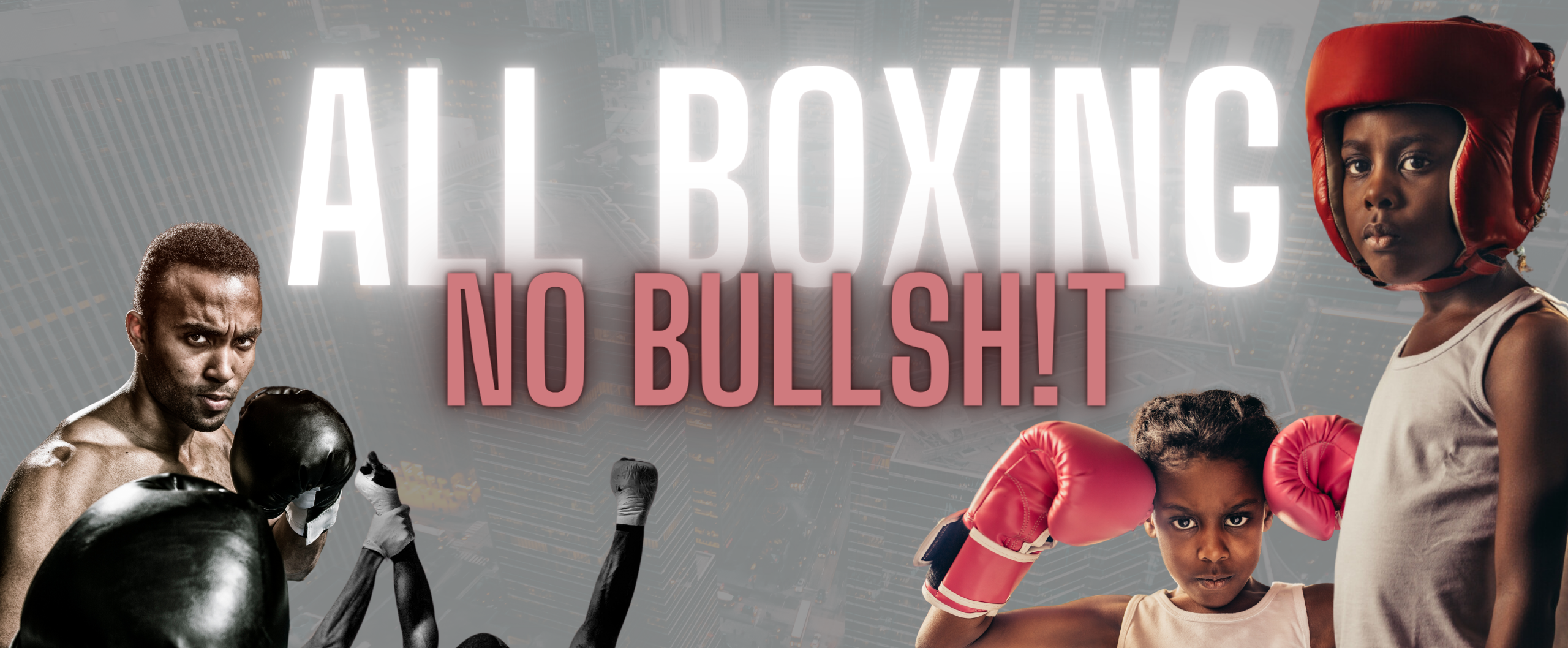Boxing History
Sugar Ray Seales still carries his 1972 Olympic gold medal with him everywhere
Published
8 months agoon
By
J. Humza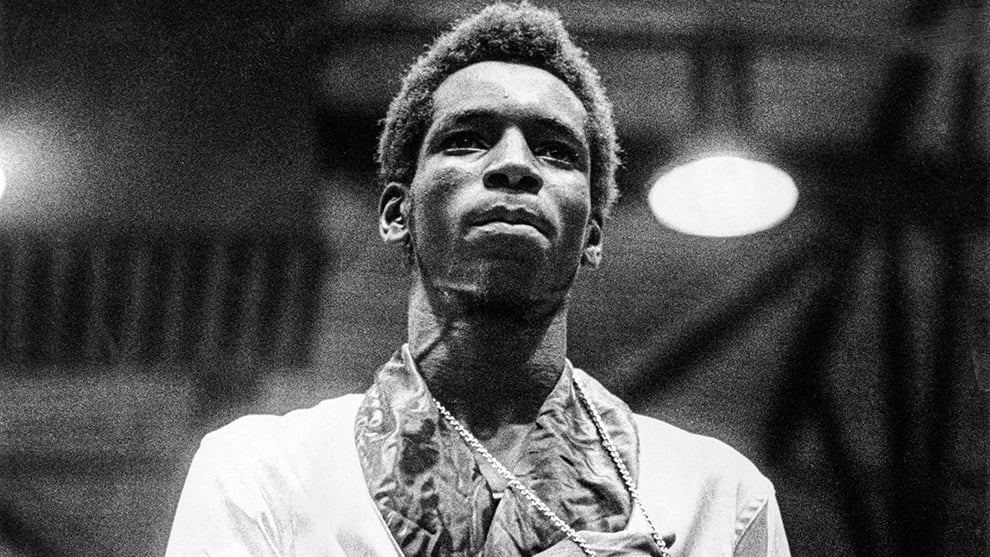
Born: April 9, 1952 (other sources suggest September 4, 1952) Saint Croix, US Virgin Islands
Record: 68 fights, 57 wins (34 by KO/TKO), eight losses (three by KO/TKO against Marvin Hagler, Alan Minter and Dwight Davison) and three draws.
Department: Medium weight
Attitude: Mańkut
It culminated in Olympic gold in 1972: the amateur career of Sugar Ray Seales
He won an Olympic gold medal at the 1972 games. The only US athlete to win a gold medal at the Olympics. He was a gold medalist at the 1971 U.S. Championships and the 1973 National Golden Gloves. At the 1971 U.S. Championships, he defeated Carlos Palomino in the semifinals, and in 1972 he lost to Palomino in the gold medal match. In the U.S. Olympic Trials, Seales defeated Pete Ranzany, who eliminated Palomino.
Seales turned professional in January 1973 in Tacoma, winning an eight-round match in his debut
1973 – He fought 14 fights, winning them all, defeating 100-fight veteran Chucho Garcia and Briton Dave Coventry.
1974 – He fought 10 fights, won 8, beat and lost David Love, and then drew with Marvin Hagler.
1975 – He had 7 fights, winning 6, defeating Mike Dixon, Mike Lancaster and Renato Garcia, but losing to Eugene Hart.
1976 – He had 4 fights, defeating George Cooper and Bobby Hoye, but losing to Alan Minter.
1977 – He had 11 fights, lost to Ronnie Harris in March, and then won 10 in a row, including victories over Tony Gardner, Vincente Medina, Mike Hallacy and Doug Demmings.
1978 – He had 7 fights, defeated Sammy Nesmith, drew with Willie Warren and lost by majority decision to Ayub Kalule in Denmark.
1979 – He had three fights, including a loss to Marvin Hagler and a draw with Mike Colbert.
1980 – It was 4-1, beating Art Harris 31-0, but losing to Dwight Davison. He outpointed Jamie Thomas in a fight that ultimately led to Seales withdrawing.
1981 to 1983 – He won 7 of his 8 fights, defeating Sammy Nesmith and John LoCicero, but losing to undefeated James Shuler. His last fight was in January 1983, defeating Max Hord in the first round.
The Sugar Ray Seales Story
Seales was born in St. Croix, U.S. Virgin Islands, where his father served in the U.S. Army. He was one of eight children whose father was a member of the US Army boxing team. The family moved to Tacoma, Washington in 1965.
He and his brother Wilbur joined the Tacoma Boys’ Boxing Club. Amateur boxing in the Pacific Northwest was booming at the time, producing future champions such as Rocky Lockridge, Leo Randolph and Johnny Bumphus.
BoxRec shows how Seales started in 1966 at 95 pounds and progressed through training to win the Tacoma Gold Gloves, Seattle Gold Gloves, Inland Empire State Gold Gloves, Oregon Gold Gloves and Western Region Gold Gloves.
He won a bronze medal at the 1970 Golden Gloves at 132 pounds before winning the national title in 1971 at 139 pounds, defeating Carlos Palomino en route to the finals.
He lost to Palomino in the 1972 national finals, but rebounded to win the U.S. Olympic trials. The games were held in Munich, and Seales defeated German hope Ulrich Bayer in his first fight. Seales was only 19 years ancient at the time, already serving in the United States Air Force and working his way to a gold medal.
Nevertheless, the games were overshadowed by the murder of eleven Israeli coaches and athletes and a German policeman by Black September terrorists who stormed the athletes’ quarters.
It seemed possible that the Games would be interrupted, but they continued, and Seales was the only member of the U.S. boxing team to win a gold medal. Seales turned professional, but his sign-on bonus was only $1,000 (for winning a gold medal in 1976, another Sugar Ray, Leonard, received $40,000).
BoxRec shows Seales had an amateur record of 48-8, but that would ignore his junior fights, club appearances, etc., and some sources, including Seales, put his amateur record at 338-12.
He won his first 21 paid fights before losing on points to Marvin Hagler 14-0 in August 1974 in Boston. They fought again in November 1974 in Seattle and the result was a majority draw, with one judge declaring Seales the winner and the other two awarding it a draw.
Losses to Eugene Hart, Alan Minter and Ronnie Harris nearly derailed Seales, but he rebounded to go 15-0-1 in his next 16 fights. In November 1978 in Denmark, he lost by majority decision to the future WBA welterweight champion Ayub Kalule.
Any dreams Seales had of a title shot ended in February 1979 when he was knocked down three times and stopped in the first round by Hagler. In 1980, a stoppage loss to Dwight Davison was another blow, but an even more devastating blow came in his next fight in August 1980. He scored points over the very lowly Jamie Thomas, but was thumbed in the left eye and suffered an injury. detached retina.
Great company: Seales fought Marvin Hagler three times, including a draw in 1974. (Photo: Albert Foster/Mirrorpix/Getty Images)
Seales already had problems with his right eye, but he successfully masked both injuries and continued boxing with very narrow vision, winning seven of his next eight fights before the problems came to airy and he was forced to retire. The damage to his eyes was so severe that he was considered blind. He underwent seven surgeries, which resulted in a slight improvement in vision in his right eye.
The operation consumed all the money Seales had, and he was forced to file for bankruptcy with a judge, writing in his case that Seales “was unable to pay even the bankruptcy filing fee.” Attempts were made to hold a benefit for Seales in Tacoma, but despite the presence of Muhammad Ali, Hagler, Ray Mancini and others, only 4,000 tickets were sold, effectively raising no money.
When Seales’ fate first became known, Sammy Davis Jr. said that Seales suffered from three defects: black, blind and broke. Davis played a major role in starting the benefit show, and when it failed, Davis donated $100,000 to pay off Seales’ debts. This gave Seales a chance to start his life over.
Beginning in 1984, he spent 17 years working with autistic children in Tacoma-area schools before retiring and moving to Indianapolis so his wife could be closer to family. Inevitably, Seales went to a local gym and began working with newborn boxers there, including now undefeated lightweight title challenger Frank Martin.
Seales was inducted into the Indianapolis Boxing Hall of Fame in 2018, and on April 14, 1984, the U.S. Virgin Islands was declared Sugar Ray Seales Day. After his wife’s death, Seales returned to Tacoma, where some of his siblings still lived. He is now 71 years ancient and proud that he never let misfortune defeat him. One thing you can be sure of: Sugar Ray still carries his gold medal with him every time he leaves the house.
He shows the medal to every newborn aspiring boxer he meets, not just boxing people. He sees the thrill that his photo with the gold medal must evoke. Life may have taken away most of his vision, but no one could take away the gold medal he won in 1972.
You may like
Boxing History
Bunny Sterling’s great legacy in British boxing
Published
1 month agoon
December 4, 2024
St Pancras’ BUNNY STERLING will always be remembered as the first black non-British-born player to win a British title. He was the first to benefit from rule changes introduced by the Board in 1968 and defeated one of the golden boys of British boxing, winning the title.
Mark Rowe had a very successful amateur career, culminating in winning a gold medal at the 1966 Commonwealth Games held in Perth, Australia. Representing England, Rowe overtook Scotsman Tom Imrie to win welterweight gold, sweet revenge for the Londoner after being knocked out by Imrie in the ABA final at the same weight just over three months earlier. When Rowe turned around two months later, it was in a blaze of publicity at the Royal Albert Hall.
Meanwhile, Bunny made his professional debut at the less austere Shoreditch Town Hall. Losing points over six rounds to Islington’s Joe Devitt BN stated that Sterling “was willing, threw one or two punches and always resisted. A boy from St Pancras given the chance to learn a trade would do well.”
Sterling came to the UK aged seven from Jamaica in 1955 and attended Fortescue boarding school in Twickenham, where he played rugby, football and cricket. He was also involved in boxing, and as an amateur at the BC Polytechnic University he came under the tutelage of the slow, great George Francis. Knowing a good player when he saw one, George encouraged Bunny to turn professional and stayed with him as his coach. A loss to Devitt was quickly followed by two more, but Bunny learned from those losses and quickly turned things around, winning the next seven.
By 1969, he was mixing it with artists such as Johnny Kramer, Wally Swift, Harry Scott and Dick Duffy. Despite losing to all four fighters, Sterling was selected by the management to fight in a British middleweight title eliminator against Denny Pleace and defeated him over nine rounds at the Anglo-American Sporting Club. Then came the final eliminator against Harry Scott and Sterling got his revenge by beating the Liverpool veteran of twelve years in Nottingham.
Sterling Bunny
Rowe won the British title at Wembley in May 1970, defeating fellow Liverpudlian Les McAteer in 14 rounds, and when he faced Sterling four months later in his first defense, most thought he would be able to finally defeat Sterling . BN was no exception and predicted Rowe to win after the break. The two fighters could not have had more contrasting careers, with Rowe winning his last 15 fights, mostly on major London events, and Bunny, who found it arduous to get fights, losing regularly and campaigning on the continent to find work.
Rowe’s trainer, Bill Chevalley, was already talking about pairing his boy with world champion Nino Benvenuti after he defeated Sterling, but those plans were thwarted by in-ring events at Wembley in September 1970. The Commonwealth title was also at stake, and Bunny, what was at stake BN called the “shock of the year” had nothing to do with it. He boxed on the back foot for the first two rounds, trying to avoid the powerful punches of the stalking Rowe, and then after catching Rowe’s head and causing a cut, Rowe charged at him, looking for an early stoppage.
This brought out the best in Sterling, who boxed better than ever before and managed to avoid Rowe’s desperate attacks. Rowe was then cut on the other side of his face, with blood pouring from two solemn cuts, and referee Wally Thom stopped the fight after four rounds, much to the annoyance of Rowe and his camp.
Bunny remained champion for four years, winning the Lonsdale belt outright before losing to Kevin Finnegan in February 1974. He was the first immigrant to win a British title and his place in British boxing history is assured.
Boxing History
Leotis Martin has beaten the fearsome heavyweight beast
Published
2 months agoon
November 29, 2024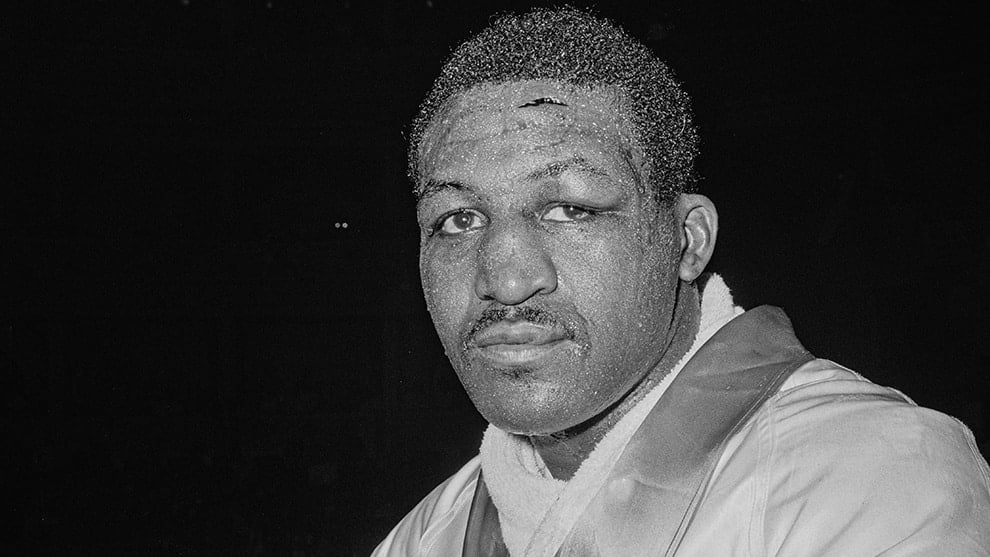
Name and surname: Leotis Martin
Born: March 10, 1939 Helena, Arkansas, USA
Died: November 20, 1995
Career: 1962–1969
Record: 36 fights, 31 wins (19 by KO/TKO), 5 defeats (2 by KO/TKO).
Division: heavyweight
Attitude: orthodox
Titles: NABF Heavyweight Champion
Major competitions
Goals scored over: Allan Harmon, Sonny Banks, Von Clay, Amos Johnson, Roberto Davila, Mariano Echevarria, Billy Daniels, Karl Mildenberger*, Thad Spencer, Alvin Lewis (twice), Roger Russell, Sonny Liston **
Lost to: Floyd McCoy, Jimmy Ellis**, Roger Russell, Henry Clark, Oscar Bonavena*
**Former/future world title version holder
*Unsuccessful challenger to the world title version
The boxing story of Leotis Martin
As an amateur, Martin had an outstanding record. In March 1960 at the Golden Gloves Tournament of Champions, he defeated future foe Jimmy Ellis in the 160-pound final and a month later. At the Intercity Golden Gloves (the predecessor of the National Golden Gloves), he won the 160-pound title. He also won the U.S. title in April 1960 again at 160 pounds (newborn Cassius Clay was the 178-pound champion that year), but lost in the semifinals of the U.S. Olympic trials in May. In 1961, he repeated his victory in the Intercity Golden Gloves, but lost in the semi-final of the 1961 national finals.
He moved to Philadelphia and was trained by Yank Durham, who also trained Joe Frazier. Martin had his first professional fight in Canada on January 26, 1962, against American Bobby Warthen, whom he defeated in the final of the Intercity Golden Gloves in 1960. He then crossed the border and scored three wins in Pennsylvania in 1962. In 1963, he won 9 -1 in ten fights and lost by upset KO to 14-14-1 Floyd McCoy.
He won five in a row, but one victory went to Sonny Banks. Banks, a ponderous puncher, knocked down Cassius Clay in the first round of their 1962 fight, only to be stopped in the fourth. On May 10, 1965, Banks was winning against Martin, who was badly shaken in the ninth throw, but delivered a counter right that sent Banks down, hitting his head on the canvas. Banks was taken from the ring on a stretcher. He never recovered and died three days later.
Martin returned to the ring with a victory in October 1965 and scored victories over Von Clay, Amos Johnson, Roberto Davila and Spaniard Mariano Echevarria. Victories over several underdogs pushed his record to 23-1 by June 1967. When Muhammad Ali refused to enlist in the U.S. Army, the WBA stripped him of his title and held a tournament to determine a novel champion. Martin was selected to compete in the qualifiers, and in the quarterfinals he drew with Jimmy Ellis, his rival from his amateur days, when they lost 1-1 in two fights. It wouldn’t be a heavyweight fight at this point.
They both climbed on the weights. Martin weighed 160 pounds in his first fight and weighed 192 pounds in this fight. Ellis weighed just 157 pounds and was 194 ¼. Ellis won easily. He was too swift for Martin from the start and Martin staggered repeatedly before the fight was stopped in the ninth throw as blood poured from a cut in Martin’s mouth. Ellis defeated Oscar Bonavena in the semifinals to win the vacant WBA title by majority decision over Jerry Quarry.
Martin came close to disappearing from the heavyweight scene when he lost a split decision to Roger Russell in November 1967. The year 1968 was a period of ups and downs for Martin. In April he went to Germany, where he defeated Karl Mildenberger three times and knocked him out in the seventh round.
The rollercoaster went down when he lost a majority decision to Henry Clark just twenty-two days after the Mildenberger fight, and then it went up again in May when he stopped Thad Spencer in nine rounds in one of the greatest heavyweight fights ever seen at the British ring. It was surprising to see two Americans on top of the Albert Hall show, but the fight will forever be remembered by those who saw it. Down went down the rollercoaster again when Martin was easily beaten on points by Oscar Bonavena in Buenos Aires in September.
Martin was dismissed as unpredictable and once again on the verge of being the favorite in the heavyweight division. But it was another uptick from the rollercoaster of 1968, when he faced Alvin “Blue” Lewis 19-1 in November and stopped Lewis in the ninth round in front of Lewis’ home fans. Lewis demanded a return and in February 1969, again in Detroit, Martin won by split decision. Martin retained Wendell Newton in October and made up for his 1967 loss to Roger Russell in November.
Martin’s fate was about to change. Since losing his second fight to Ali in 1965, Sonny Liston had won 14 straight fights, 13 by KO/TKO, and Martin was selected as winner number 15. They were to meet in Las Vegas on December 6, 1969. twelve rounds, and the inaugural title of the North American Boxing Federation is at stake. Liston had a 20-pound advantage over Martin and was three inches taller. The downside for Liston is that he’s a week away from his thirty-ninth birthday.
Yet Liston was still feared. Martin helped Liston prepare for fights with Floyd Patterson and Muhammad Ali, so he knew Liston well. He decided that if he could survive the early rounds, he would face the weakening Liston and have a chance to win. It didn’t look like Martin’s plan was going to work when Liston dropped him with a left hook overdue in the fourth round.
Martin survived the remaining 30 seconds and boxed in retreat, partly as part of his plan but also because of Liston’s hammer jab. Even on the retreat, Martin was finding the mark with his own jab and using his younger legs to set a faster pace than Liston wanted. After eight rounds of chasing the retreating Martin, Liston was ahead with three points on two cards and two points on the third, but Liston was tiring.
In the eighth round, Martin shook off a huge left hook and began to push Liston away with more punches. In the ninth, Martin missed Liston and then delivered a demanding cross to the head that stunned Liston. Martin landed lefts and rights and Liston fell face first onto the canvas, not moving for the 10 second count. This rollercoaster reached novel heights, with Martin earning the best win of his career and a shot at the world title.
But this is Leotis Martin and the roller coaster has taken one last cruel turn. Martin was diagnosed with retinal detachment and forced to retire. The injury was said to be from the Liston fights, but there was a mention that he was battling an injury from before the Liston fight. Eye surgery has advanced and a detached retina would not automatically be a reason for retirement today, but for Martin in 1969 it meant the end of his career.
During his boxing career from 1964, Martin worked full-time as a mechanic for a manufacturing company and continued this work until his retirement in 1995. In November of that year, he suffered a stroke caused by high blood pressure and complications of diabetes and died at the age of only 56.
Boxing History
Leotis Martin has beaten the fearsome heavyweight beast
Published
2 months agoon
November 29, 2024
Name and surname: Leotis Martin
Born: March 10, 1939 Helena, Arkansas, USA
Died: November 20, 1995
Career: 1962–1969
Record: 36 fights, 31 wins (19 by KO/TKO), 5 defeats (2 by KO/TKO).
Division: heavyweight
Attitude: orthodox
Titles: NABF Heavyweight Champion
Major competitions
Goals scored over: Allan Harmon, Sonny Banks, Von Clay, Amos Johnson, Roberto Davila, Mariano Echevarria, Billy Daniels, Karl Mildenberger*, Thad Spencer, Alvin Lewis (twice), Roger Russell, Sonny Liston **
Lost to: Floyd McCoy, Jimmy Ellis**, Roger Russell, Henry Clark, Oscar Bonavena*
**Former/future world title version holder
*Unsuccessful challenger to the world title version
The boxing story of Leotis Martin
As an amateur, Martin had an outstanding record. In March 1960 at the Golden Gloves Tournament of Champions, he defeated future foe Jimmy Ellis in the 160-pound final and a month later. At the Intercity Golden Gloves (the predecessor of the National Golden Gloves), he won the 160-pound title. He also won the U.S. title in April 1960 again at 160 pounds (youthful Cassius Clay was the 178-pound champion that year), but lost in the semifinals of the U.S. Olympic trials in May. In 1961, he repeated his victory in the Intercity Golden Gloves, but lost in the semi-final of the 1961 national finals.
He moved to Philadelphia and was trained by Yank Durham, who also trained Joe Frazier. Martin had his first professional fight in Canada on January 26, 1962, against American Bobby Warthen, whom he defeated in the final of the Intercity Golden Gloves in 1960. He then crossed the border and scored three wins in Pennsylvania in 1962. In 1963, he won 9 -1 in ten fights and lost by upset KO to 14-14-1 Floyd McCoy.
He won five in a row, but one victory went to Sonny Banks. Banks, a ponderous puncher, knocked down Cassius Clay in the first round of their 1962 fight, only to be stopped in the fourth. On May 10, 1965, Banks was winning against Martin, who was badly shaken in the ninth throw, but delivered a counter right that sent Banks down, hitting his head on the canvas. Banks was taken from the ring on a stretcher. He never recovered and died three days later.
Martin returned to the ring with a victory in October 1965 and scored victories over Von Clay, Amos Johnson, Roberto Davila and Spaniard Mariano Echevarria. Victories over several underdogs pushed his record to 23-1 by June 1967. When Muhammad Ali refused to enlist in the U.S. Army, the WBA stripped him of his title and held a tournament to determine a fresh champion. Martin was selected to compete in the qualifiers, and in the quarterfinals he drew with Jimmy Ellis, his rival from his amateur days, when they lost 1-1 in two fights. It wouldn’t be a heavyweight fight at this point.
They both climbed on the weights. Martin weighed 160 pounds in his first fight and weighed 192 pounds in this fight. Ellis weighed just 157 pounds and was 194 ¼. Ellis won easily. He was too speedy for Martin from the start and Martin staggered repeatedly before the fight was stopped in the ninth throw as blood poured from a cut in Martin’s mouth. Ellis defeated Oscar Bonavena in the semifinals to win the vacant WBA title by majority decision over Jerry Quarry.
Martin came close to disappearing from the heavyweight scene when he lost a split decision to Roger Russell in November 1967. The year 1968 was a period of ups and downs for Martin. In April he went to Germany, where he defeated Karl Mildenberger three times and knocked him out in the seventh round.
The rollercoaster went down when he lost a majority decision to Henry Clark just twenty-two days after the Mildenberger fight, and then it went up again in May when he stopped Thad Spencer in nine rounds in one of the greatest heavyweight fights ever seen at the British ring. It was surprising to see two Americans on top of the Albert Hall show, but the fight will forever be remembered by those who saw it. Down went down the rollercoaster again when Martin was easily beaten on points by Oscar Bonavena in Buenos Aires in September.
Martin was dismissed as unpredictable and once again on the verge of being the favorite in the heavyweight division. But it was another uptick from the rollercoaster of 1968, when he faced Alvin “Blue” Lewis 19-1 in November and stopped Lewis in the ninth round in front of Lewis’ home fans. Lewis demanded a return and in February 1969, again in Detroit, Martin won by split decision. Martin retained Wendell Newton in October and made up for his 1967 loss to Roger Russell in November.
Martin’s fate was about to change. Since losing his second fight to Ali in 1965, Sonny Liston had won 14 straight fights, 13 by KO/TKO, and Martin was selected as winner number 15. They were to meet in Las Vegas on December 6, 1969. twelve rounds, and the inaugural title of the North American Boxing Federation is at stake. Liston had a 20-pound advantage over Martin and was three inches taller. The downside for Liston is that he’s a week away from his thirty-ninth birthday.
Yet Liston was still feared. Martin helped Liston prepare for fights with Floyd Patterson and Muhammad Ali, so he knew Liston well. He decided that if he could survive the early rounds, he would face the weakening Liston and have a chance to win. It didn’t look like Martin’s plan was going to work when Liston dropped him with a left hook slow in the fourth round.
Martin survived the remaining 30 seconds and boxed in retreat, partly as part of his plan but also because of Liston’s hammer jab. Even on the retreat, Martin was finding the mark with his own jab and using his younger legs to set a faster pace than Liston wanted. After eight rounds of chasing the retreating Martin, Liston was ahead with three points on two cards and two points on the third, but Liston was tiring.
In the eighth round, Martin shook off a huge left hook and began to push Liston away with more punches. In the ninth, Martin missed Liston and then delivered a demanding cross to the head that stunned Liston. Martin landed lefts and rights and Liston fell face first onto the canvas, not moving for the 10 second count. This rollercoaster reached fresh heights, with Martin earning the best win of his career and a shot at the world title.
But this is Leotis Martin and the roller coaster has taken one last cruel turn. Martin was diagnosed with retinal detachment and forced to retire. The injury was said to be from the Liston fights, but there was a mention that he was battling an injury from before the Liston fight. Eye surgery has advanced and a detached retina would not automatically be a reason for retirement today, but for Martin in 1969 it meant the end of his career.
During his boxing career from 1964, Martin worked full-time as a mechanic for a manufacturing company and continued this work until his retirement in 1995. In November of that year, he suffered a stroke caused by high blood pressure and complications of diabetes and died at the age of only 56.

TYSON FURY RETIRES after OLEKSANDR USYK GETS BIG AWARD! But WHAT NEXT for both men?

Israil Madrimov On Vergil Ortiz Jr Fight

Mike Tyson “LET’S F*CKIN GO” Jake Paul FULL PRESS CONFERENCE • Energized for KNOCKOUT with LF*GO!
Trending
-
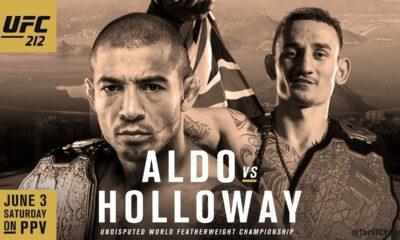
 MMA8 months ago
MMA8 months agoMax Holloway is on a mission at UFC 212
-

 MMA8 months ago
MMA8 months agoCris Cyborg ready to add a UFC title to her collection
-
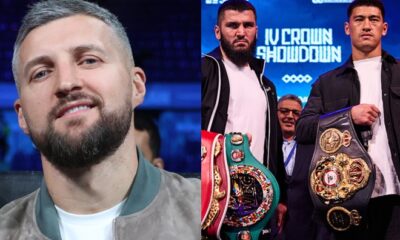
 Interviews3 months ago
Interviews3 months agoCarl Froch predicts that Artur Beterbiev vs Dmitry Bivol
-

 MMA8 months ago
MMA8 months agoThe Irish showed up in droves at the Mayweather-McGregor weigh-in
-
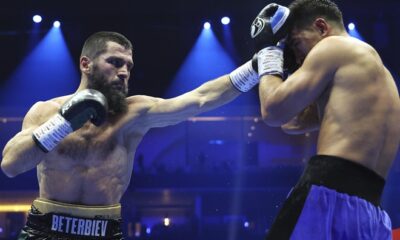
 Interviews3 months ago
Interviews3 months agoArtur Beterbiev vs Dmitry Bivol
-
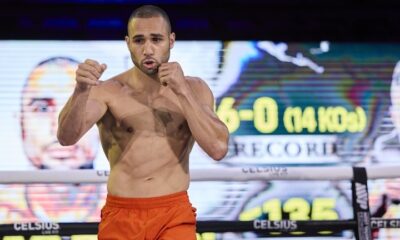
 Boxing6 months ago
Boxing6 months agoLucas Bahdi ready to test his skills against Ashton Sylve
-
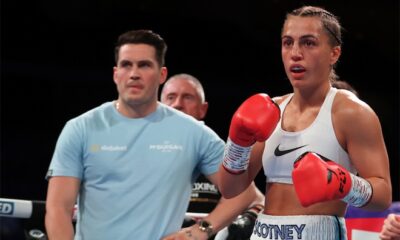
 Interviews8 months ago
Interviews8 months agoI fell in love with boxing again
-
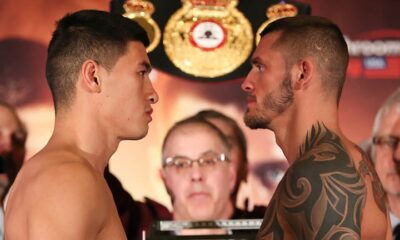
 Opinions & Features3 months ago
Opinions & Features3 months agoDmitry Bivol: The story so far

